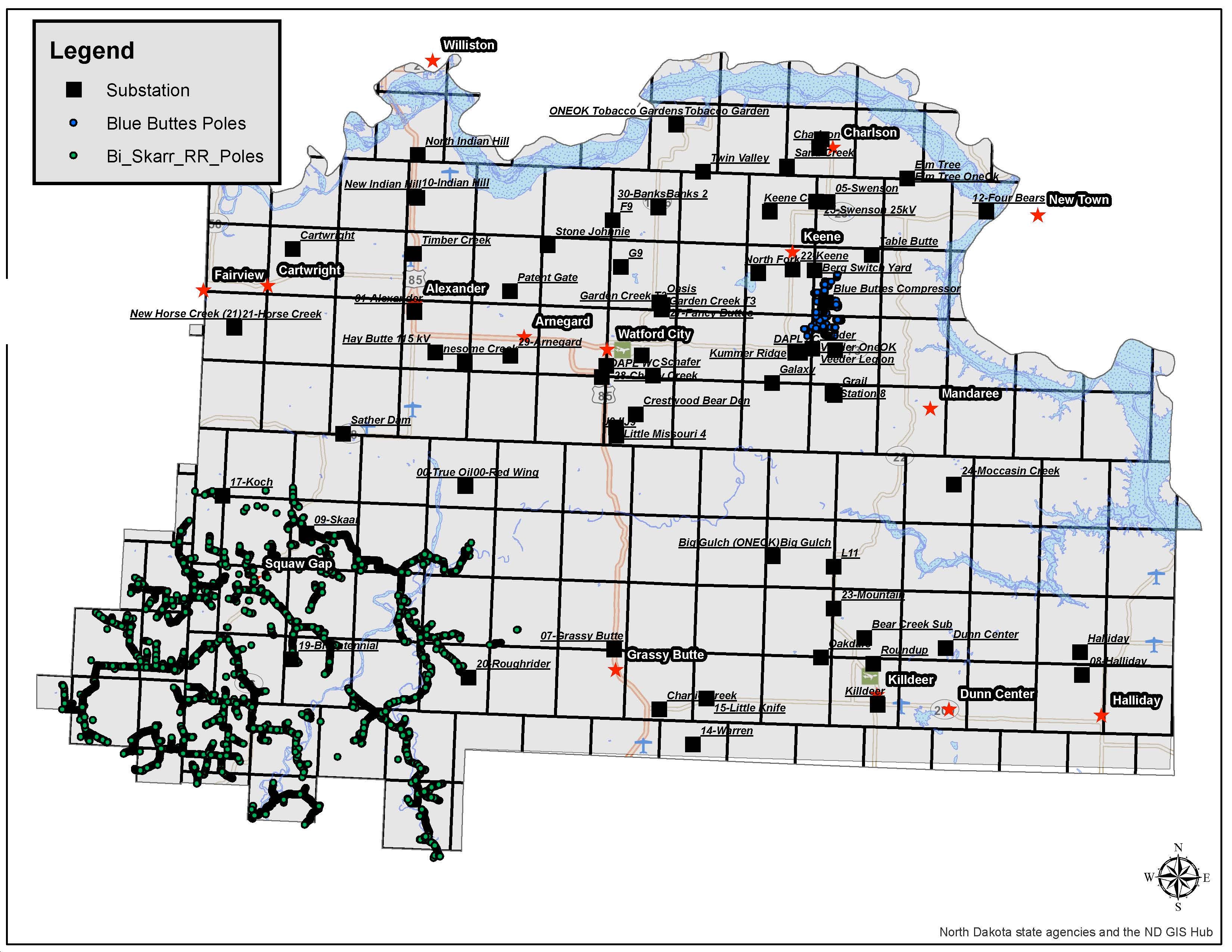This August, McKenzie Electric Cooperative Inc. took on the task of pole testing and mapping pole locations in conjunction with Mountain Plains LLC. The goal of these tests is to create a plan for pole replacement and to better understand pole degradation over time through the heat of summer and bitter North Dakota winters.
Mountain Plains first visually inspects the poles for large cracks, broken grounds, broken insulators and anything else that may need tending to and adds their data to the Partner Distribution and Inspection tool. This software holds the information line crews and engineers need in order to keep electricity flowing to your home’s and businesses. Once the visual inspection is finished, the crew drills through the pole twice horizontally at 90 degree angles to determine diameter and then at a 45 degree angle at the base. Drilling in multiple areas ensures that each pole is getting an accurate reading on what might be going on inside. The testing crew gets real time information on whether the pole passes or fails a safety inspection. Passes and fails both get recorded into the Partner system, and depending on the severity or extent of the pole damage, a line crew may be dispatched as soon as the information is received to start repairs.
The Drill:
The drill being used is an IML-RESI PowerDrill that digitally maps the density of the selected pole with a Resistograph. This shows areas inside the pole that may be rotting or a low-density weak spot caused from a crack or a pit in the tree the pole was made from. All of these symptoms can cause a failed pole resulting in an unplanned power outage.
The Selected Area:

McKenzie Electric has approximately 66,020 poles in our distribution area consisting of a mixture of Fir and Pine tree poles. Of those, around 6,000 will be tested this year, or roughly 10 percent of the total poles. The poles being tested range from the early 2000s and go as far back as the 1950s in terms of age. The map pictured below outlines where the pole testing will occur in the Blue Buttes, Skarr, Bicentennial, and Rough Rider areas. Poles were selected firstly based on their age, then the criteria was filtered down to where outages most commonly occur and the long range plan. The long-range plan is a combination of data based on power needs and growth in the McKenzie Electric service area. This plan is in place to maximize the output of power to certain areas while keeping equipment within the safe parameters of operation and with the least amount of down time due to construction and faulty equipment.
Why Are We Testing Poles?:
Rural Utilities Service (RUS) requires pole testing be done in 12-15 year increments for reliability and safety. As well as the federal requirement, testing poles decreases the chance of having an unplanned outage from a downed power line caused from faulty equipment or a rotted out pole.
